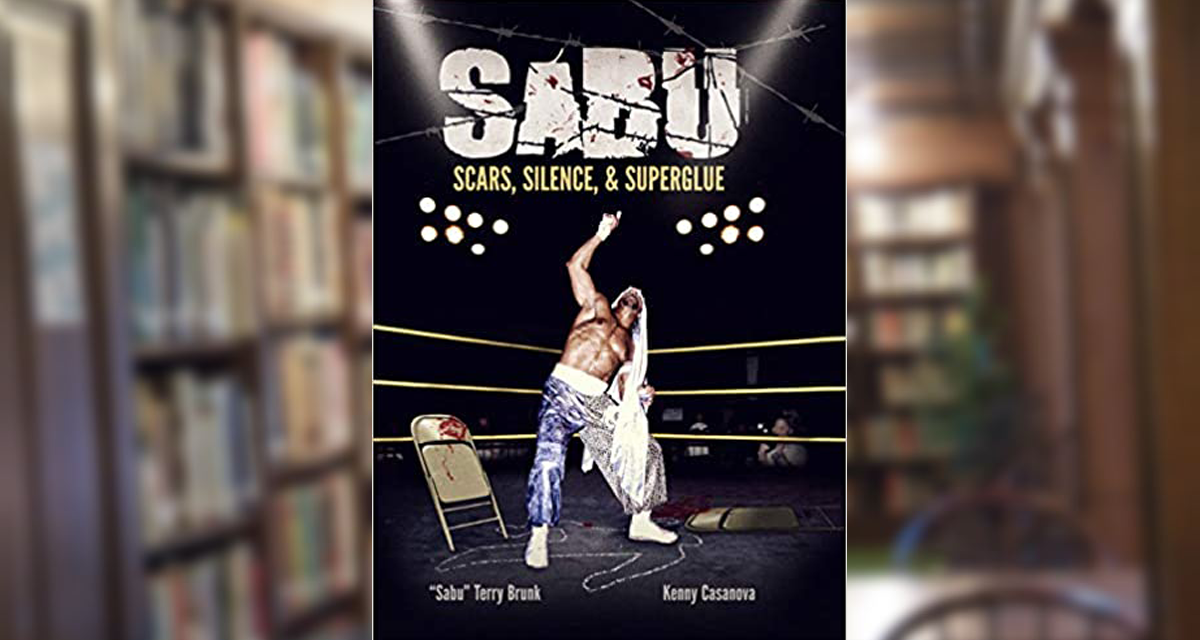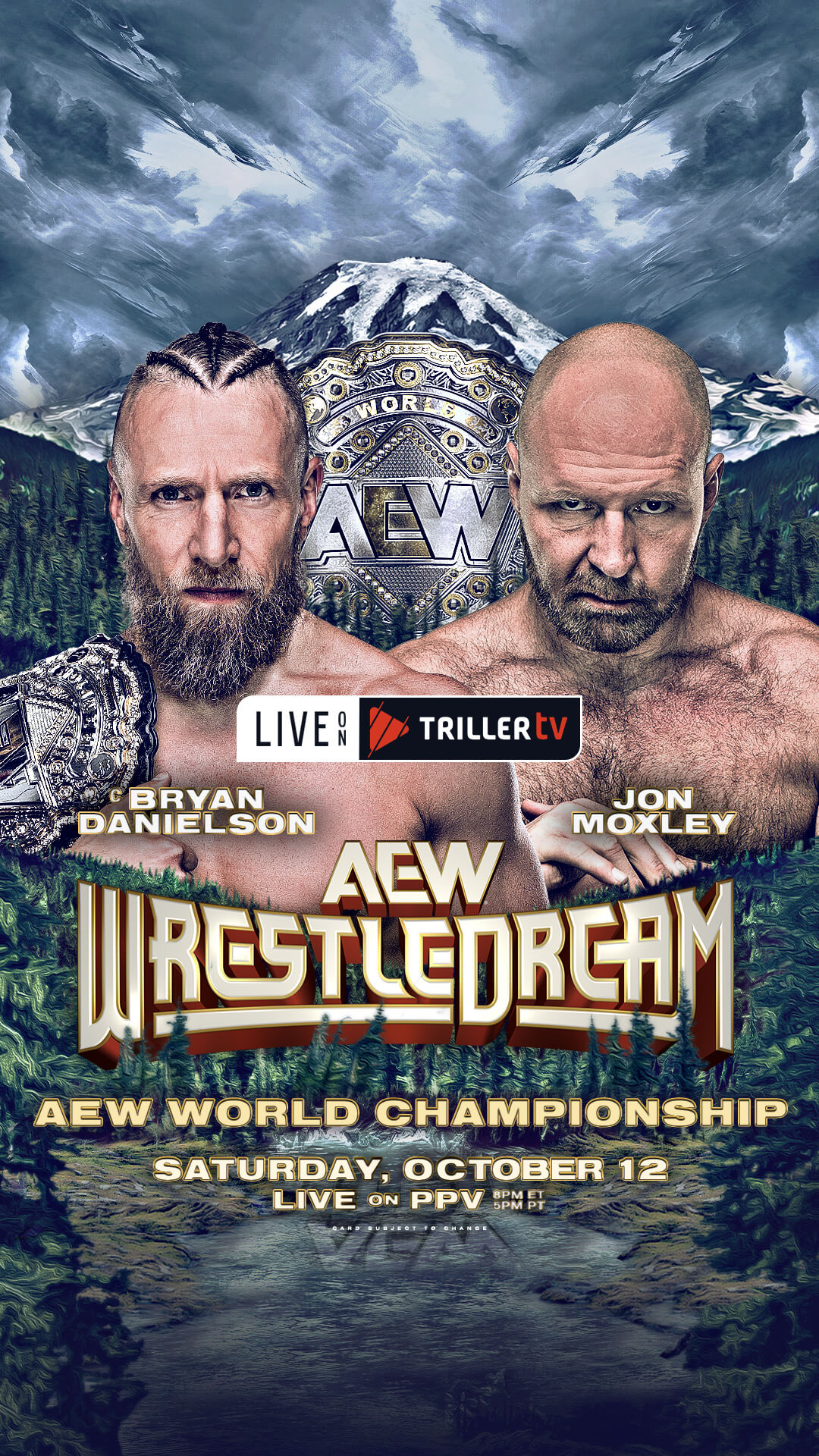The autobiography of Sabu starts off with a bang – literally – as Sabu recalls being shot in the face in his younger days.
“I sucked hard on what was left of my choppers, and then spit hard onto the sidewalk,” wrote Sabu in Chapter zero of his autobiography. “In the syrupy rope that fell from my jaw, I felt little chunks of teeth drop over the numbness of my lips. When I looked down at the pavement, I felt nauseous looking at a mixture of bone shards, blood, and bullet pieces.”

Sabu with Super Genie Melissa Coates.
Um, what did you expect? This is Sabu: Scars, Silence & Superglue written by “Sabu” Terry Brunk and Kenny Casanova and out now from Walking On Hot Waffles (WOHW) Publishers, after all! My fellow readers, it’s time to get hardcore! And maybe chug some antacid if you have a weak stomach!
Before I get into the guts of this book, I must admit to a little bias just for the sake of journalistic integrity. I was beyond excited to hear that a Sabu autobiography had been released. In my early pro wrestling fandom days, and before the internet existed, I relied on pro wrestling magazines to get my fix on pro wrestling news. I should also point out that for years I survived on two television channels: one local to where I lived and one national, Canadian channel. I know: how did I survive, right? So, it wasn’t until many years later that I got to see my first Sabu match. But, luckily, he was often featured in articles and posters, usually drenched in blood, in the wrestling mags I could get my grubby little hands on. Because of all of these circumstances, there was always such a mystique surrounding Sabu and he was someone I was always curious to learn more about. And now that I’ve read this book, (I love my job!) I can definitely say I’ve gotten an unfiltered crash course on the “Suicidal, Homicidal and Genocidal” Sabu!
OK, do you have your seat belt secured? Good, then let’s begin this hardcore literary journey, shall we? While I wouldn’t say this book is as unrelenting as say the recently released Shamrock bio by Jonathan Snowden, this book doesn’t really let up once you start reading. Even before he would become famous as a member of the Extreme Championship Wrestling (ECW) roster, Sabu makes it abundantly clear from the start that he takes pro wrestling “extremely” seriously. After wrestling in junior high and high school for five years and within ONLY three months of “having my face almost blown off my head,” Sabu got to work on achieving his goal of entering the squared circle.
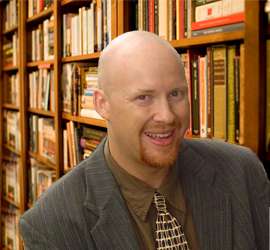
Kenny Casanova.
“In that first year, I gained 40 pounds,” explained Sabu in Chapter three. “I ate as much protein as I could. I worked out like a demon. I took more Greco-Roman lessons. When I had finished, I took the first step in doing what really needed to be done. I moved up to Williamston to train with the legendary Sheik.”
The Sheik (Edward Farhat), of course, was not only an infamous heel pro wrestler and promoter, he was also Sabu’s uncle. And just a word of warning, unless you have a death wish, don’t ever refer to Farhat as “The Original Sheik,” in the presence of Sabu! “To wrestling fans later on, he was sometimes called ‘The Original Sheik’ to distinguish him from that other whacko, The Iron Sheik, a wrestler who wouldn’t even debut until 1972,” stated Sabu in Chapter one. “To call him ‘Original,’ however, is an understatement, and I don’t like that word. He was ‘The’ Sheik.”
The second and third chapters of this autobiography provide both an informative overview of The Sheik’s pro wrestling career along with some intriguing reflections from Sabu on having a famous pro wrestler in his family tree. The third chapter, which focuses on the hilarious training techniques of The Sheik, is definitely a highlight. Sabu’s training BEGAN with six months of daily wood chopping. “Man, this is some real Mr. Myagi bullshit, right here,” wrote Sabu, referencing the Pat Morita character from The Karate Kid movies. “I come to find out, it was all part of something in professional wrestling called ‘weeding out the weak.’ If I had just said, ‘fuck this,’ he would’ve said, ‘OK, you don’t have what it takes.’ I’m glad I was smart enough to see that if you wanted to be a wrestler, you had to deserve it.” Sabu’s next lesson would be dismantling and reassembling a wrestling ring repeatedly over an entire day! Having passed those tests (this reader will shamefully admit, I probably would have quit on day one as I couldn’t even make it through dry January) Sabu would go on to train for the next two years under his uncle’s tutelage. For his first match, Sabu would wrestle under the moniker of Terry S.R. The Sheik would never tell Sabu what “S.R.” stood for!
“My heart pounded in my chest,” recalled Sabu in Chapter 3. “I was walking the aisle, all set to take on ‘The Canadian Road Warrior’ in a little hall in the Polish section of Hamtramck, Michigan. The match was all in the ring. There was nothing off the ropes. No flashy stuff. No crazy finish. It was just the basics and it was all over the mat. We did everything Sheik wanted and I was pretty proud of myself for not messing anything up. We made it to the end. It was a 10-minute draw.”
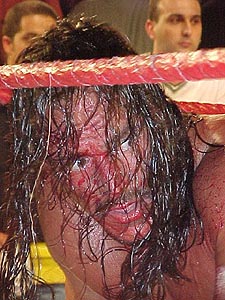
A typical day at the office for Sabu.
Sabu would continue gaining experience through the independent wrestling promotions as Terry “Superfly” Snuka and Terry S.R., the Superfly. The Sheik would eventually christen him with “Sabu” after an actor in a movie he loved called The Elephant Boy. Sabu would hone his now trademark hardcore style when his Uncle wasn’t looking (or so he thought, more on this later!) with fellow Sheik trainee Rob Van Dam (who also writes one of the book’s forewords).
“We (Sabu and Van Dam) would wait for The Sheik to head on into the house to get some iced tea or something,” wrote Sabu in Chapter four. “Whenever it was just us out there, we knew it was time to shift gears. The basics would go out the window with no Sheik there, we were there to practice weird moves. The weirder the better: flips, bouncing off ropes, spinning around, anything that looked different. The shift in class was our unspoken rule. It is funny, though. The moment The Sheik would return, we would go right back to basics.”
Sabu would get the call to wrestle in Japan for Atshushi Onita’s Frontier Martial-Arts Wrestling (FMW). It was here that The Sheik would give his nephew some life-changing advice: “I want you to start to wrestle like how you would in the backyard when you thought I wasn’t watching!” Sabu would indeed heed his uncle’s words. He began incorporating tables into his matches and then naturally, chairs. “For years people got hit with chairs, but nobody really used the impact of their own body to propel the chair as a weapon,” wrote Sabu in Chapter five. “That is how the ‘Arabian Facebuster’ came about – where I put it under my own leg and come off the ropes with it between the leg drop.”
On his second FMW tour, Sabu would start doing his signature, and often times dangerous, barbed wire matches. And for extra variety, sometimes the barbed wire that replaced the ring ropes in these matches would be soaked in gasoline and lit on fire! These matches would manifest Sabu’s aversion to hospitals and receiving medical treatment. Sabu admitted in the book that his golden rule is “that you should always self-medicate at all costs.” So, Sabu would opt to mend his cuts/injuries himself, often with superglue. This self-medicating didn’t go unnoticed as some of his fellow wrestlers would gift the amateur surgeon with vials of the paste as a rib. (I think this goes without saying, but please don’t try anything in this book at home kids!)
Sabu would then go on to ECW, but in his early days with the promotion, he revealed he had a tryout with the World Wrestling Federation (WWF, now World Wrestling Entertainment, WWE). Sabu says he was offered $250,000 to portray a Sultan gimmick in WWF. Sabu says he turned down the offer when the idea to have The Iron Sheik as his manager/uncle was proposed.
“Booking the Iron Sheik as my ‘uncle’ was a huge symbol of disrespect to me at the time,” Sabu quipped, not holding back in Chapter six. “My mindset was that changing my name and modifying my look was one thing. They wanted to own me and the likeness they would promote for merchandise reasons. I was okay with this to some degree. However, for the Iron Sheik to be my uncle, I told my friends what that was – it was just plain ignorant. If my uncle would have seen that pairing on TV, that would have been bad news. Seeing me hang out with a cheap, WWF welfare rip-off version of The Sheik would not have gone over well.”
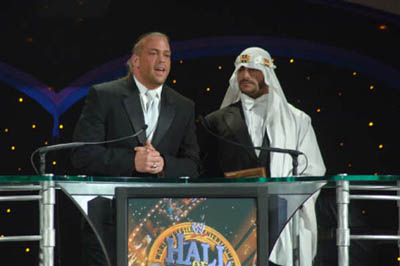
Rob Van Dam and Sabu at the induction of the late Ed “The Sheik” Farhat into the WWE Hall of Fame in 2007.
Sabu goes into great detail about his bloody bouts in ECW including his much revered/referenced barbed wire match with Terry Funk for the ECW world title; his feuds inside and outside the ring with Taz (who interestingly enough provides the book’s second foreword, no I’m serious, that’s not a typo!); having his neck broken by Chris Benoit at the 1994 November to Remember show; Sabu’s subsequent addiction to drugs; no-showing an ECW event because of a booking for New Japan Pro Wrestling (NJPW) only to return to ECW for the 1995 November to Remember event; being a part of the first and more memorable ECW invasion of WWE and the eventual demise of ECW. Yes, all the greatest hits are here and Sabu even addresses the infamous story that fellow ECW wrestler, the Sandman, shared in an online interview about Sabu giving Tammy Sytch drugs in exchange for oral sex. And no, I’m not going to tell you if Sabu said the story is true or not, if you really must know…read the book!
If this reader would be allowed to put on her official critic hat for a bit, I have to say that I wish that all the photos included in the book, instead of just some, were accompanied by captions. There are some great photos here and I just wanted more details! I also have to say that I felt Sabu glossed over certain details when it came to his personal life such as his marriage. All readers get to learn is basically that he was married, but now he is not. Sabu also refers to current partner Melissa Coates (Super Genie) as his manager, but there are no further details about their relationship. I fully understand and respect Sabu’s right to keeping his private life private, but I’ll also admit I’m someone who is nosy by nature. Maybe too nosy! But to be fair, the book is rounded out by plenty of secondary perspectives contributed from Sabu’s pro wrestling peers including Tommy Dreamer, the Blue Meanie, Kevin Sullivan, Mikey Whipwreck, Raven and Al Snow. But be forewarned, there is also a “guest puke passage” from Don Vega. Full disclosure: ghostwriter Casanova gave me advance warning about this comical, yet very gross few pages. Much appreciated Mr. Casanova! And I did appreciate the times that Sabu would let us readers peek inside his mind with revelations like him being shy. (I did not see that coming!) “I can’t lie,” confessed Sabu in Chapter seven. “Another reason I didn’t talk (as a pro wrestler) was that it simply wasn’t my strong suit. I was very shy honestly and never felt comfortable on the mic.”
Sabu concludes the book by discussing his continued involvement in pro wrestling (pre-COVID of course); his late uncle’s induction into the WWE Hall of Fame (Sabu’s acceptance speech would be completely on brand, consisting of one sentence: “This is a great honor to my family.”); wrestling on the ECW Originals team at WrestleMania 23; addressing his often controversial, and to many people shockingly offensive, tweets on his Twitter account and with this being Sabu’s autobiography, he couldn’t end the book without some “F.U. Shout-outs” to people in pro wrestling who have crossed him. (This section was recently read and discussed on Jim Cornette’s podcast!) But in the end, Sabu promises readers that he has no regrets and his career is not over yet!
“If I could do it all over again and shed less blood and avoided more injuries at the expense of my performance, I wouldn’t even consider it,” reflected Sabu on the book’s final page. “Not one drop of sweat, blood or shred of brain tissue was wasted away in regret. I am proud to call myself a professional wrestler and I know that my uncle, The Sheik, is looking down on me somewhere, pencil in hand, and couldn’t be more proud.”
Sabu’s autobiography is undoubtedly, the strongest offering from ghost writer, Casanova, yet. For once I was actually grateful for my insomnia as this was a book I truly didn’t want to put down. Not every reader will have the stomach for this, but for those who do, they will be rewarded with further insight into one of pro wrestling’s proudest journeymen. Now that’s hardcore!
RELATED LINKS
- Buy Sabu: Scars, Silence & Superglue from Amazon.ca or Amazon.com
- Buy a signed copy of Sabu: Scars, Silence & Superglue from WOHW Publishers
- Sabu: Twitter
- Kenny Casanova: Twitter
- The Sheik and Sabu story archive
- Medical Fundraiser for Melissa Coates
- SlamWrestling Master Book List
